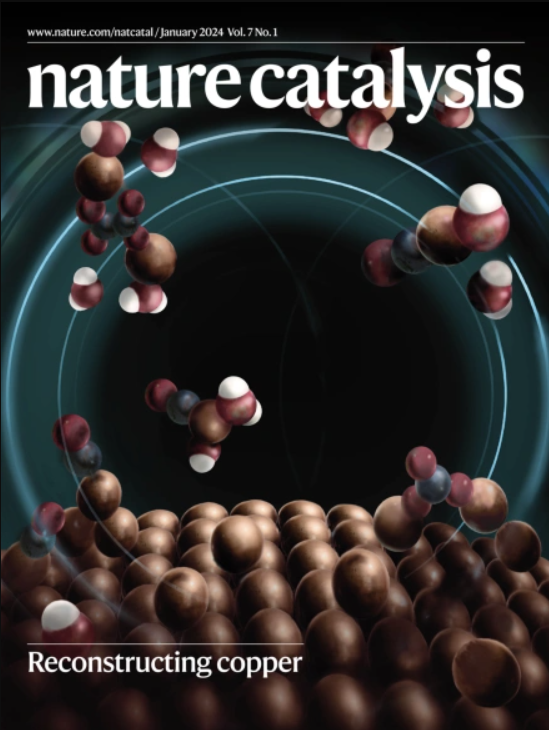Shape matters too
IF 44.6
1区 化学
Q1 CHEMISTRY, PHYSICAL
引用次数: 0

形状也很重要
以前试图解释粒子形状的尝试采用了Wulff方法来估计特定粒子面的影响。然而,这种方法只考虑了纳米颗粒的平衡形状,并没有反映它们在反应条件下的演变。因此,结合密度泛函理论和玻尔兹曼统计,该团队模拟了一个范围在0.5到10纳米之间的大型纳米粒子集合,包括在反应条件下可能有效容纳活性位点的所有可能形状。通过这种方式,他们能够重现活性的共同实验趋势-以周转频率(TOF)表示-作为粒度的函数,其最大值约为2.3 nm(如图,面板a)。最终,在这个范围内的颗粒与四重位点的高流行率有关,这些位点被认为是最具活性的位点。然而,对于特定的粒径范围,存在不同的形状,其特征是四重位点的不同比例(如图b-d所示,粒径为~ 2nm)。因此,不同的粒子形状对实验观测到的TOF有不同的贡献。这项工作为合理解释众所周知的镍催化剂上CO2甲烷化的结构敏感性提供了新的视角。更一般地说,该研究表明如何建模可以为其他结构敏感反应的催化剂合成提供信息,以获得具有高活性的形状调谐催化剂。
本文章由计算机程序翻译,如有差异,请以英文原文为准。
求助全文
约1分钟内获得全文
求助全文
来源期刊

Nature Catalysis
Chemical Engineering-Bioengineering
CiteScore
52.10
自引率
1.10%
发文量
140
期刊介绍:
Nature Catalysis serves as a platform for researchers across chemistry and related fields, focusing on homogeneous catalysis, heterogeneous catalysis, and biocatalysts, encompassing both fundamental and applied studies. With a particular emphasis on advancing sustainable industries and processes, the journal provides comprehensive coverage of catalysis research, appealing to scientists, engineers, and researchers in academia and industry.
Maintaining the high standards of the Nature brand, Nature Catalysis boasts a dedicated team of professional editors, rigorous peer-review processes, and swift publication times, ensuring editorial independence and quality. The journal publishes work spanning heterogeneous catalysis, homogeneous catalysis, and biocatalysis, covering areas such as catalytic synthesis, mechanisms, characterization, computational studies, nanoparticle catalysis, electrocatalysis, photocatalysis, environmental catalysis, asymmetric catalysis, and various forms of organocatalysis.
 求助内容:
求助内容: 应助结果提醒方式:
应助结果提醒方式:


